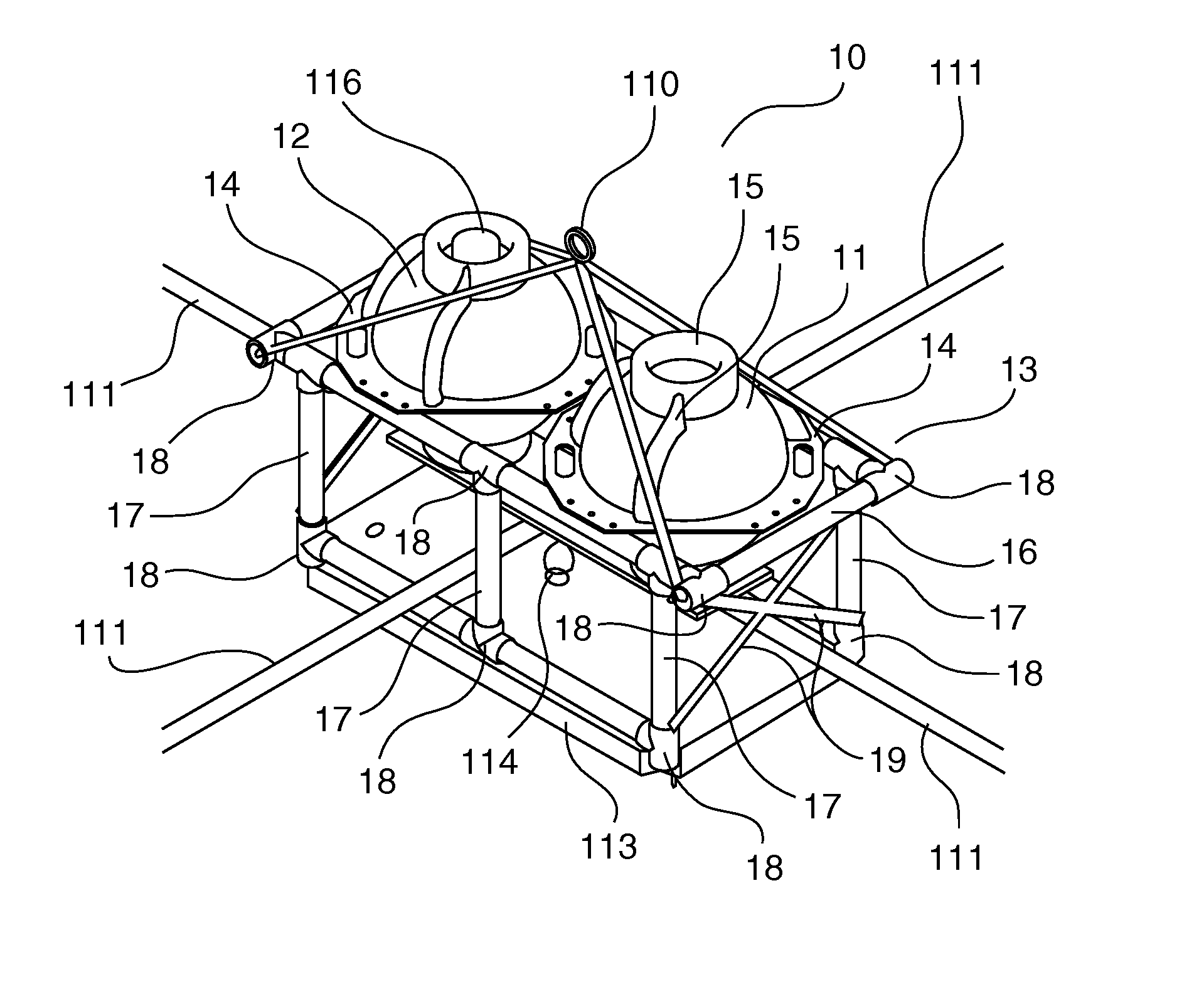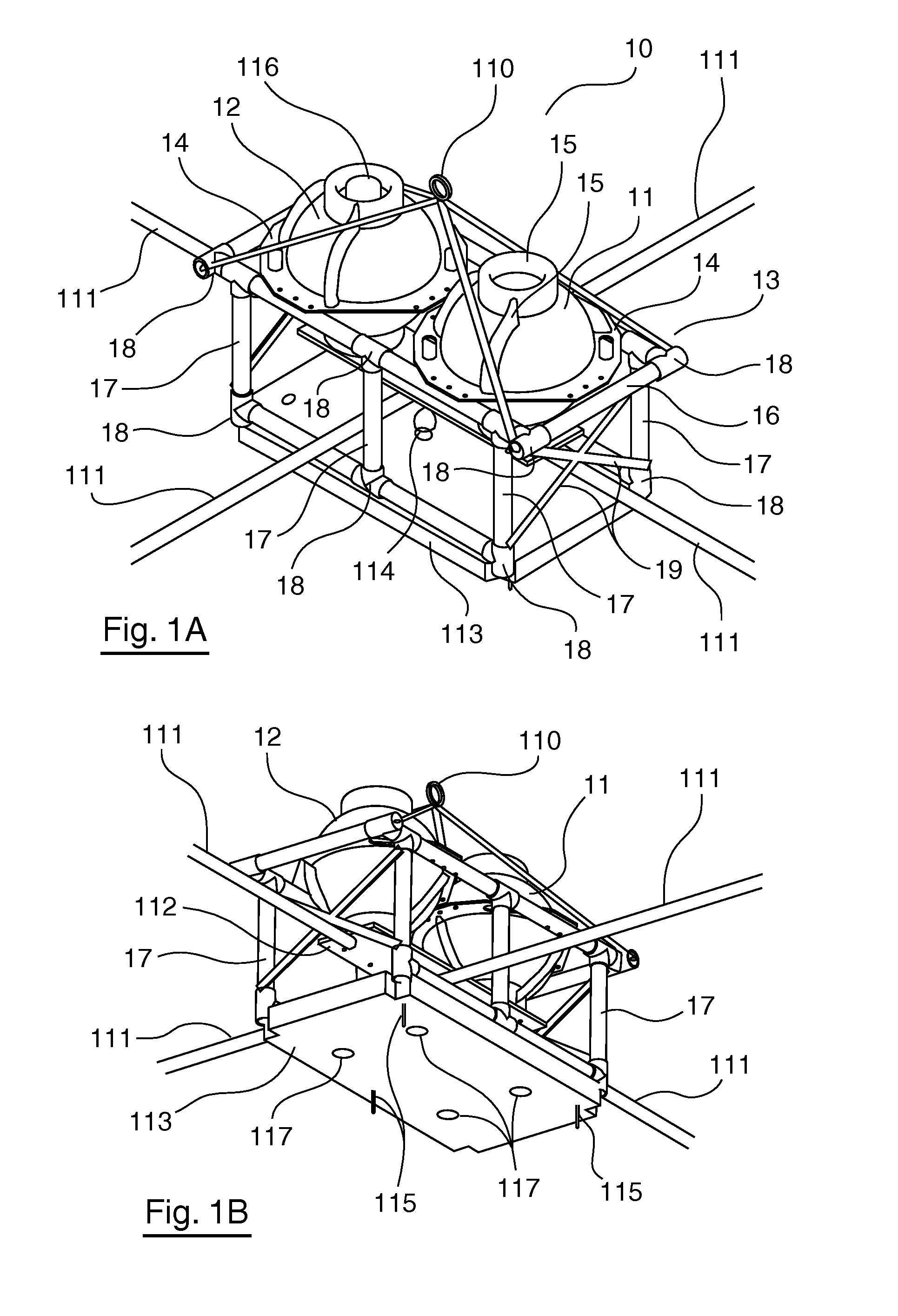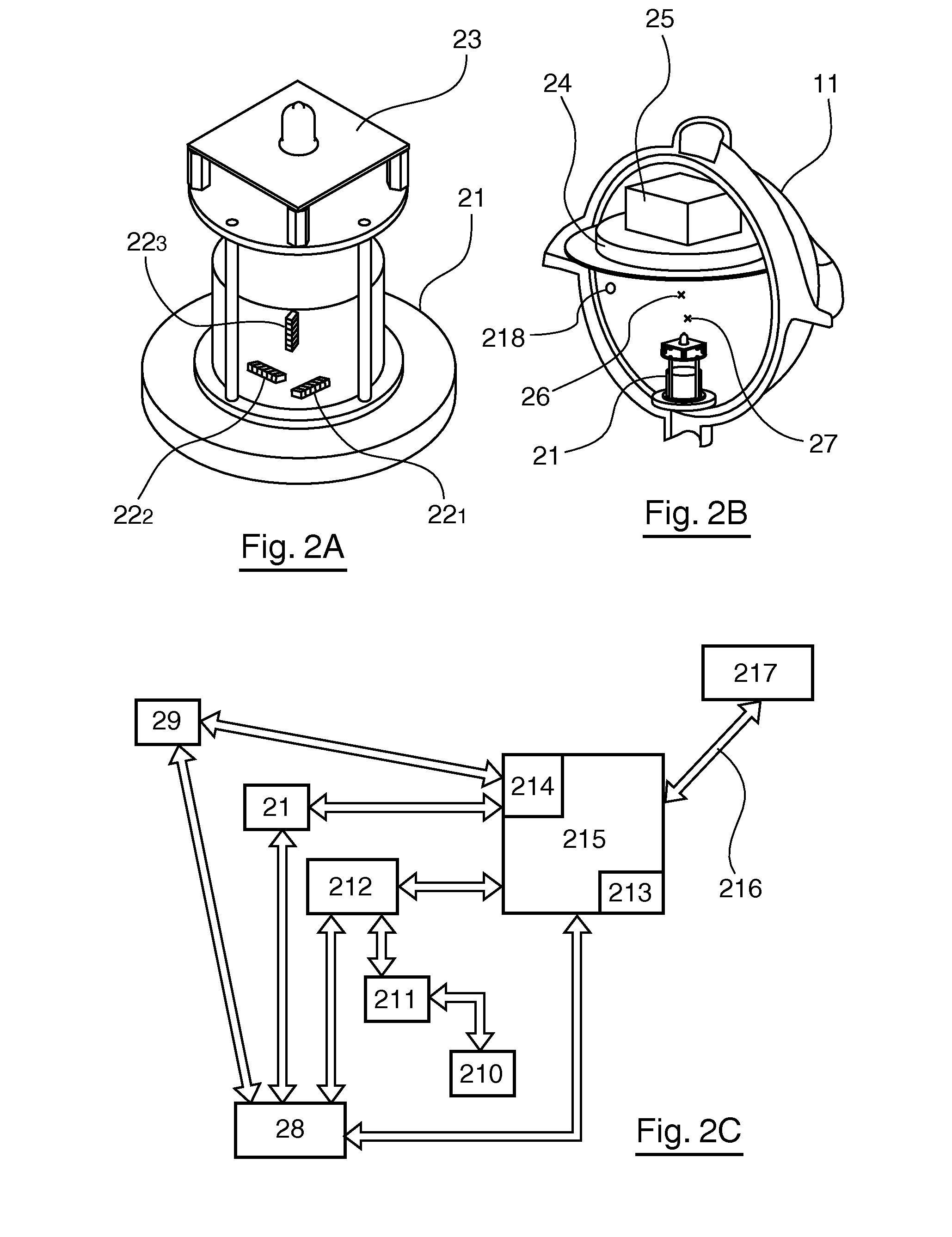Geophysical measurement device for natural soil resource exploration in aquatic environment
a geophysical measurement and aquatic environment technology, applied in measurement devices, scientific instruments, instruments, etc., can solve the problems of difficult transfer to aquatic environments, clear results obtained using this method, and resource undetected or unexplored, and achieve the effect of limiting the hydrodynamic thrust for
- Summary
- Abstract
- Description
- Claims
- Application Information
AI Technical Summary
Benefits of technology
Problems solved by technology
Method used
Image
Examples
Embodiment Construction
[0060]As already mentioned, an embodiment of the invention is advantageously a geophysical measurement device for the exploration of natural soil resources in an aquatic environment. The embodiment, described hereinafter, relates to a device intended in particular for deep-sea oil prospecting and comprising two floatability caissons, as illustrated in FIGS. 1A and 1B, in a top and bottom perspective view, respectively.
[0061]The geophysical measurement device 10 comprises a first floatability caisson 11, containing a magnetic sensor, also referred to as a magnetometer, and a second floatability caisson 12 mounted on a tubular structure supporting frame 13. The two watertight caissons 11 and 12 are identical in this embodiment. These caissons 11 and 12 are substantially spherical in shape overall, this specific shape enables the walls of the caisson to withstand the hydrostatic pressure up to a depth of six thousand meters. The caissons consist of a glass sphere, not represented in FI...
PUM
 Login to View More
Login to View More Abstract
Description
Claims
Application Information
 Login to View More
Login to View More - R&D
- Intellectual Property
- Life Sciences
- Materials
- Tech Scout
- Unparalleled Data Quality
- Higher Quality Content
- 60% Fewer Hallucinations
Browse by: Latest US Patents, China's latest patents, Technical Efficacy Thesaurus, Application Domain, Technology Topic, Popular Technical Reports.
© 2025 PatSnap. All rights reserved.Legal|Privacy policy|Modern Slavery Act Transparency Statement|Sitemap|About US| Contact US: help@patsnap.com



